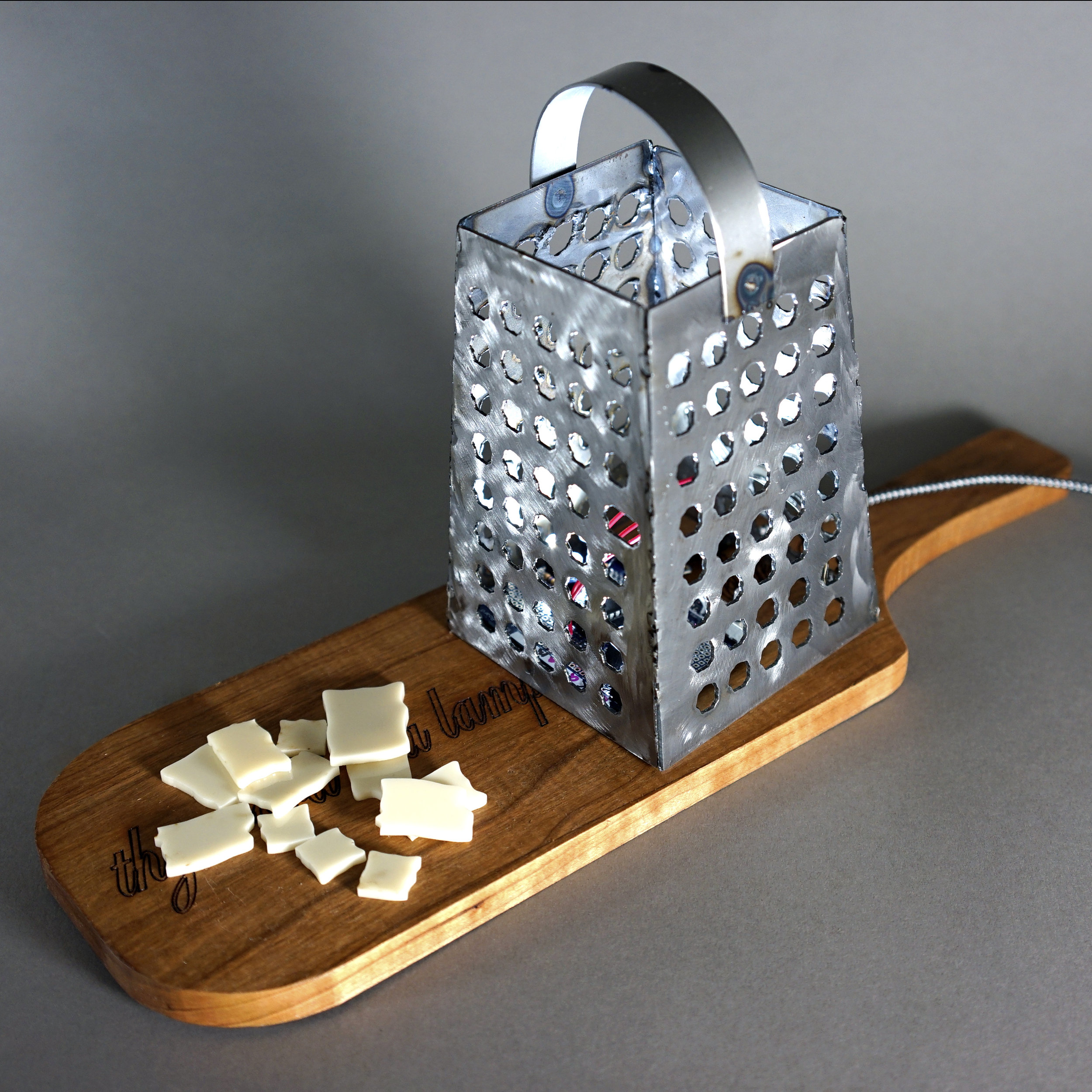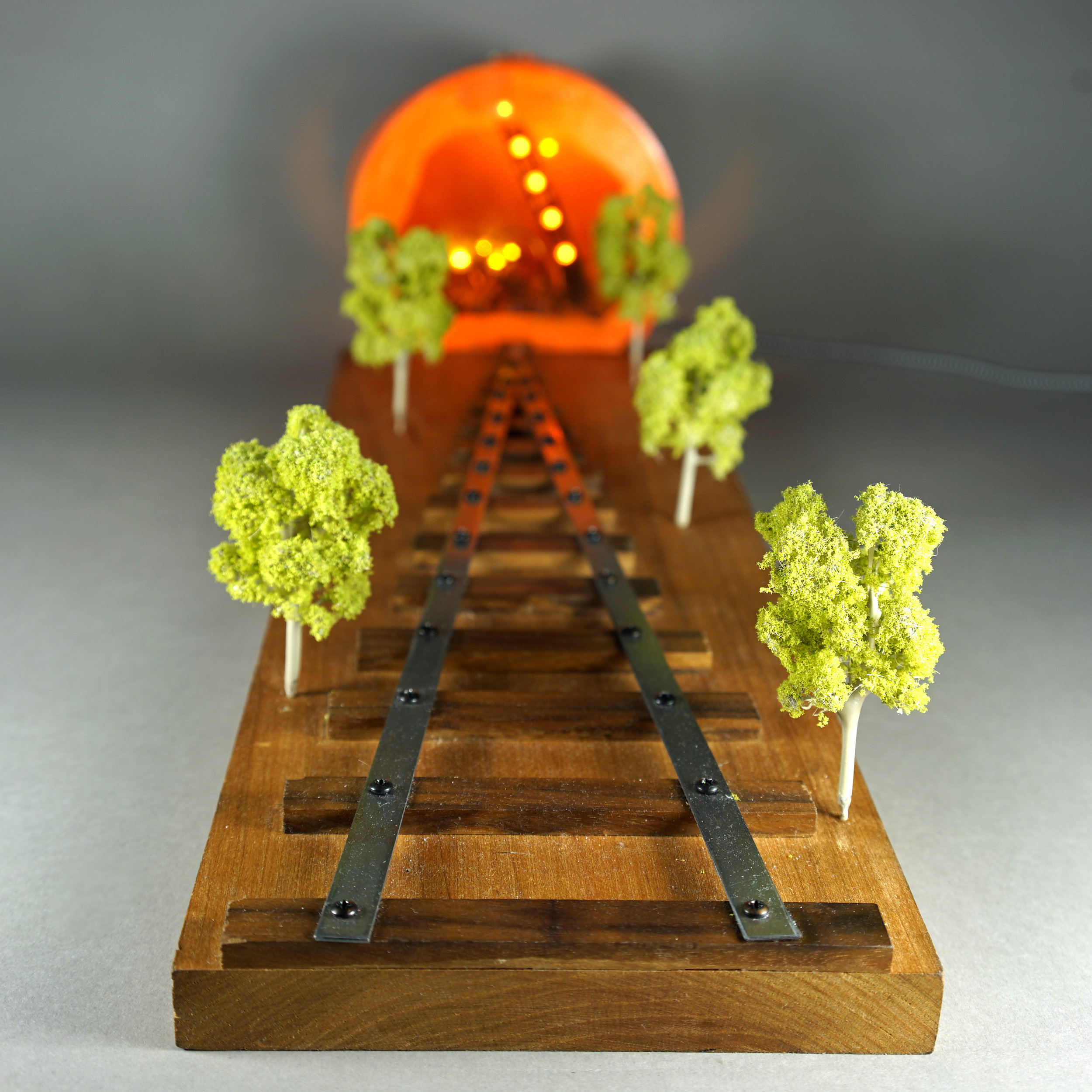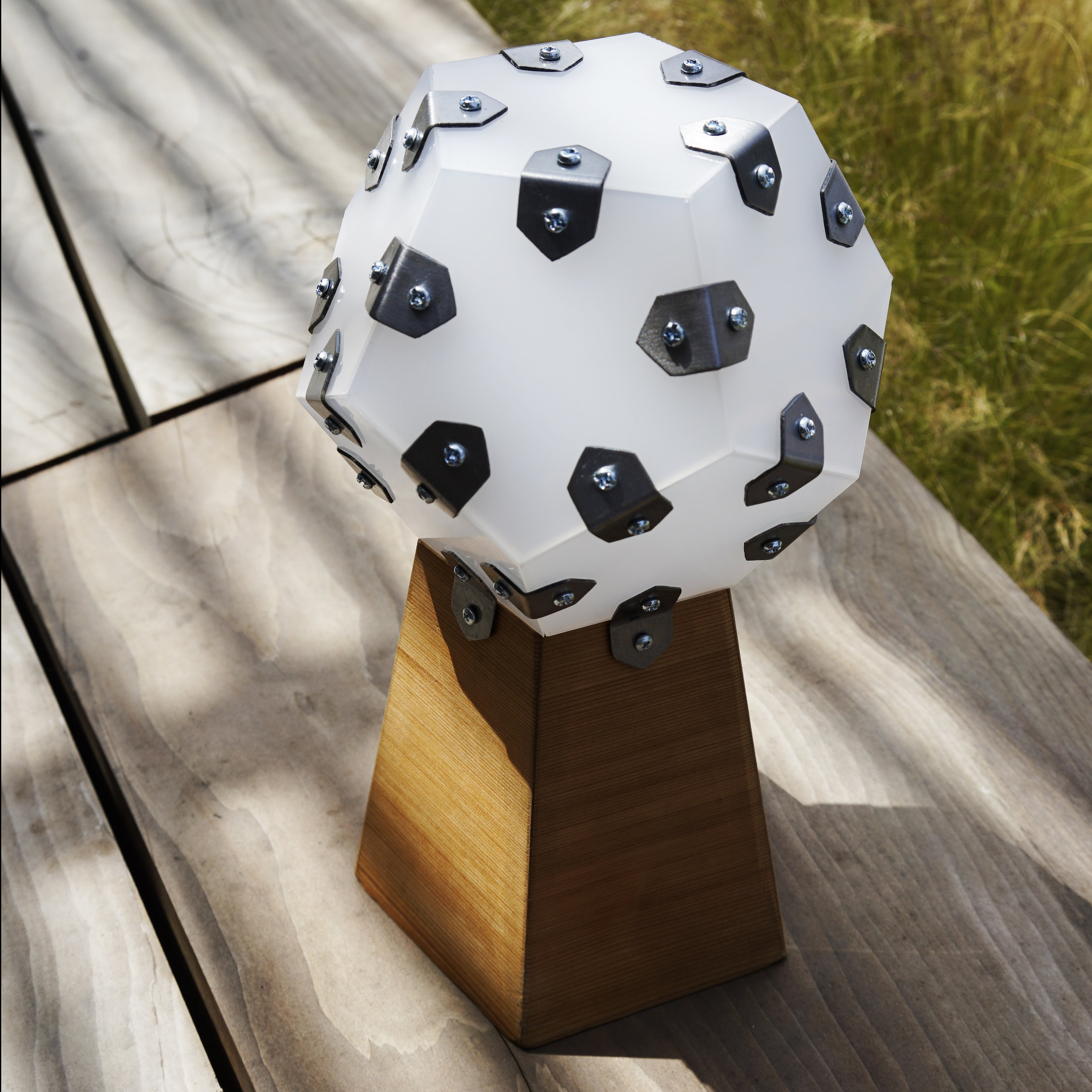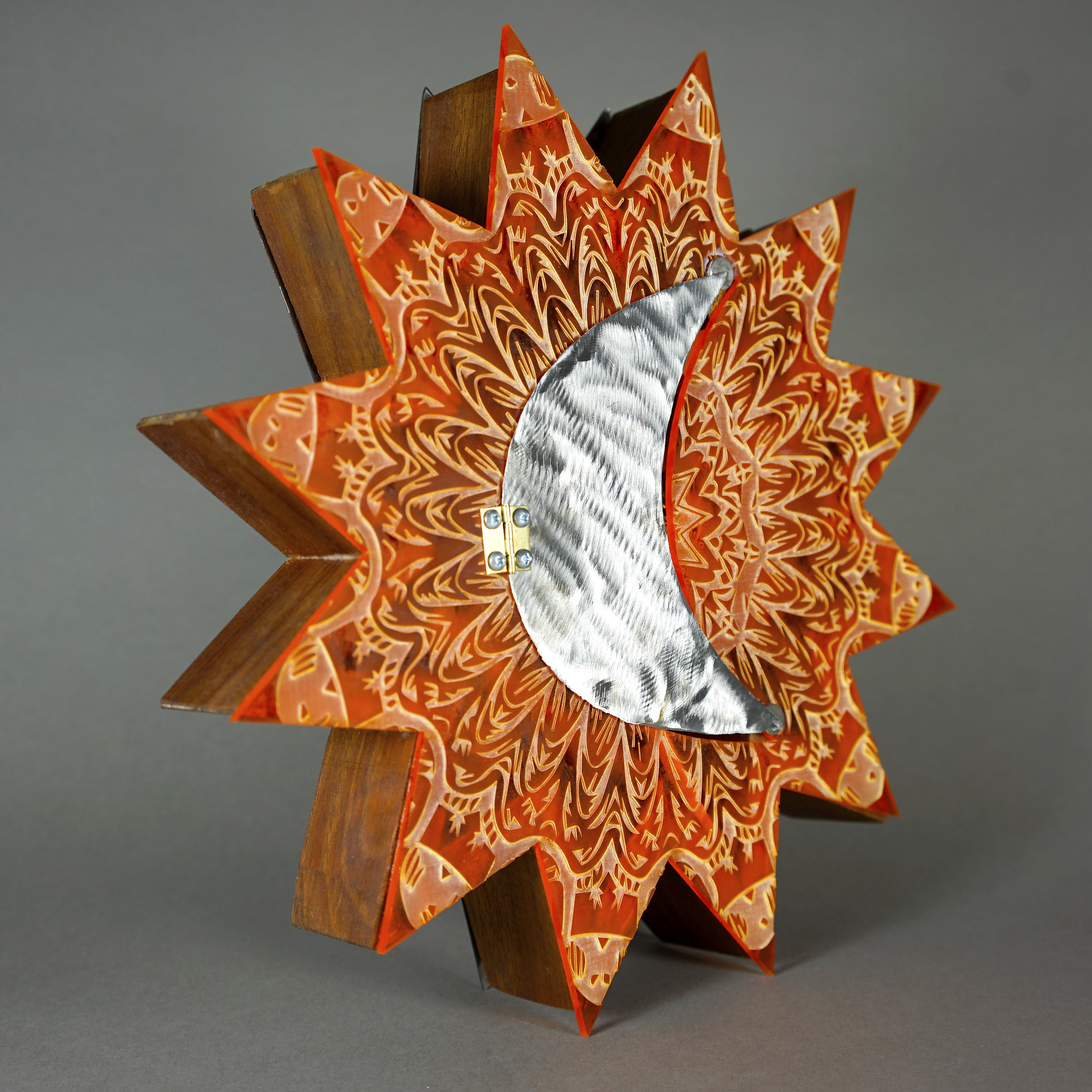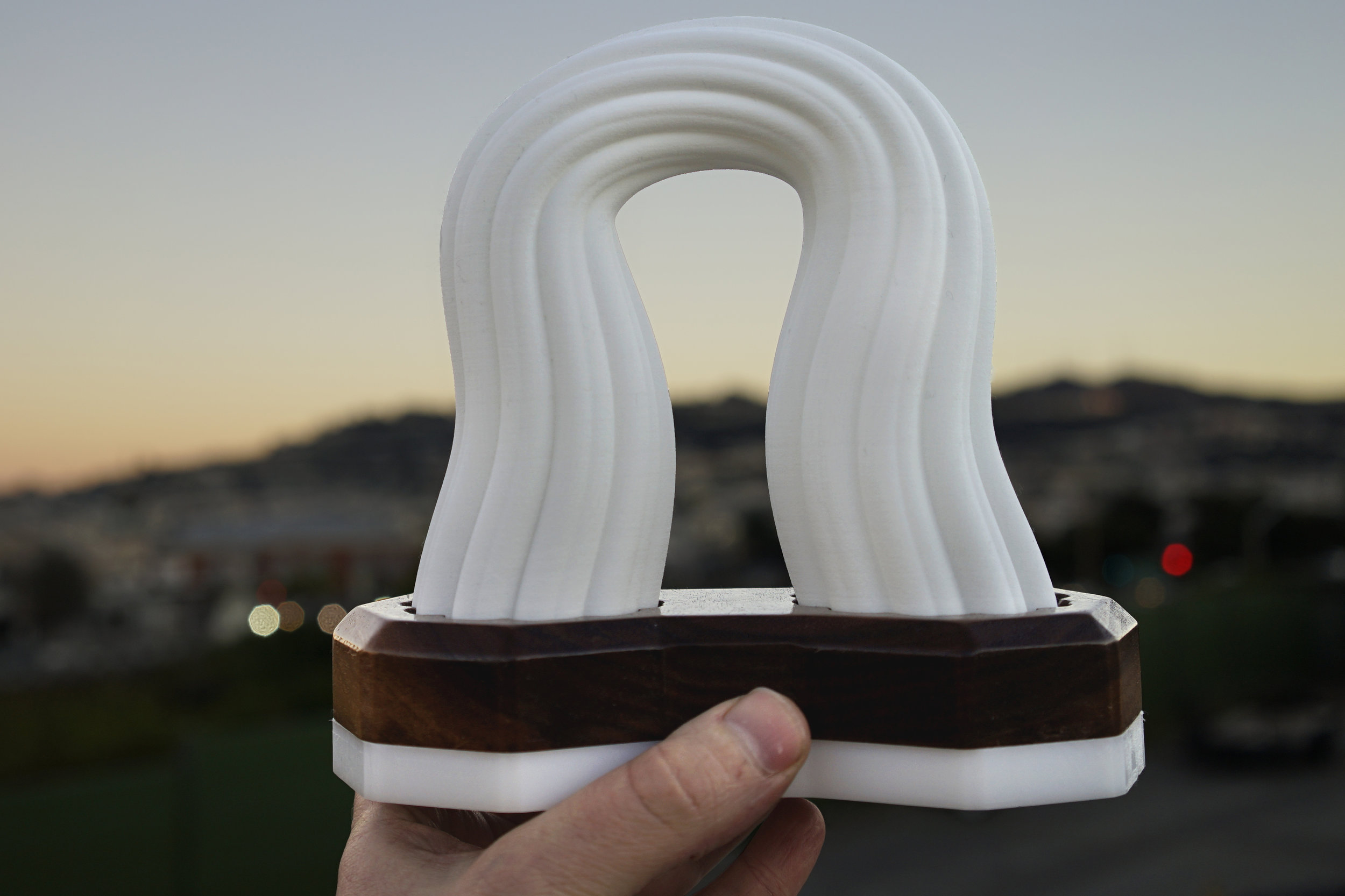Come pick up some extrasleepy sculptures from Navy Pier in Chicago the week of September 19th-22nd.
photo by Braden Weeks Earp
Extrasleepy pieces at the Seattle Art Fair, with Open-Editions!
New Piece: CONSUMERS SHOULD IMMEDIATELY...
2019
Internet connected display, lithium battery and charger, 3D-printed brackets, recalled children’s unicorn boot.
Consumers Should Immediately... uses a live data feed from The United States Consumer Product Safety Commission (USCPSC) to randomly display thousands of products recalled for reasons such as fire, electrocution, entrapment, choking and a variety of other unintended dangers. Every two minutes the embedded screen lists the name of the product, the identified danger, the product manufacturer, and the original recall date. The electronics are enclosed in an actual recalled children’s unicorn boot, along with an embedded rechargeable battery, allowing for an uninterrupted stream of recalled products in any location.
This piece uses Adafruit’s Pyportal and CircuitPython
NEW PIECE: SWEET LOAF
2019
CNC-cut walnut, 3D printed lens, Acrylic, Arduino, Addressable LEDs, Rechargeable battery
Sweet Loaf is a small rechargeable freestanding light source. The lamp can operate plugged to a wall or untethered for about 5 hours per recharge. A micro switch and usb charging port are embedded in the side of the acrylic. All machining on the wood and acrylic was done on the Bantam Tools Mill.
Dimensions: 5”w x 3”h x 4”d
See more: http://www.extrasleepy.com/#/sweetloaf/
This image is from the internet. Photographer unknown.
Spring Semester Student Work Highlights
Here is a varied set of projects from the spring LWHS Device Invention (10-12 grade) and Design and Technology (9th grade) classes that, as I sorted through the semester’s documentation, caught my eye as extraordinarily innovative or generally well done.
This is a fly incubator, created for our genetics instructor, by a group of four 9th grade students. With custom-made incubation tube caddies, this container keeps the fly larvae (also known as maggots : 0) in an adjustable, temperature-regulated environment. This was created by Alex, Indigo, Max and Kaira.
This is an IOT project that uses RFID (radio frequency identification) to detect whether chickens have returned to the coup at night. The creator, Hannah (10th grade), noted that if the chickens do not make it back into the coup, they run the risk of being eaten at night. This system posts their status to a webpage and sends you a text at the end of the day letting you know which chickens “might be eaten”.
Another project by Hannah and her collaborator Emily visualizes the coup conditions for some neighborhood chickens. The two students built their own data collection system to record environmental data about the chicken coups, including temperature, volume and light level. They then used P5.js to visualize the data over a 24-hour period (above)
This is the Arduino-based data collection system for the chicken coups.
Using live data, this display by Naomi (11th grade) adjusts LEDs to match the sunrise and sunset of four different cities in the US.
Above are a few of the 140+ lamps we built with the 9th-grade students in the team-taught Design and Technology course. Most students start the year with little to no experience in Design and Fabrication and are required to use wood, metal, acrylic and a programmed circuit in the making of the lamp.
Here is a pair of display-based IOT projects. The one above uses an API to display local movies and average audience review scores. The one below gives bus times and utilizes a funny ASCII representation of a Muni bus.
Finally, this 4ft-diameter target for the school’s physics department, created by a group of four 9th grade students (Marco, Lea, Adam and Mirabelle), is to be used for projectile experiments. When a marble is launched and hits the target, vibration sensors let you know which of the rings the marble lands on. Your score is displayed for five seconds on a digit display. It works amazingly well!
I'm on The Edge ❤️
When I attended the School for Poetic Computation a few years back, I met this really interesting artist, engineer, and musician Zach Dunham. After some time at Kickstarter, these days he’s working at a CNC machine manufacturer Bantam Tools at which one of his projects is producing my recent podcast obsession: “The Edge”. If you’re interested in make-y machine-y design-y engineer-y stuff, this podcast is the best. When I found it I binged the entire first season in just a few hours.
Then, a few weeks ago, Zach contacts me and asks if I want to be part of an episode with Mohit Bohite–whose work I absolutely love. It’s pretty amazing to find something you love and then a few months later get asked to participate in it. So, the episode is out today!!!
https://www.bantamtools.com/blogs/theedge/season-2-episode-5-mohit-bhoite-giving-life-to-electronics
If you find this episode exciting, don’t stop there! There are so many good episodes.
New Piece: Square Loop
2019
CNC-cut Cherry, 3D printed lens, HDPE, Microcontroller, Addressable LEDs, Rechargeable battery
Square Loop is a small rechargeable freestanding light source. A small microcontroller, running circuit python, controls addresses randomly changing RGB LEDs which transition, in 15-minute intervals, through an array of warm and cool tones. The lamp can operate plugged to a wall or untethered for 4 hours per recharge.
Dimensions: 7”w x 9”h x 2.25”d
See more: http://www.extrasleepy.com/#/squareloop/
Some of the student made amplifiers from the Fall 2018 Analog and Digital class
These are of few of the portable bluetooth amplifiers from a class I teach at Lick-Wilmerding High School. Students spend a semester learning about the circuit parts as well as how the enclosure will affect the sound. Then, using skills from electronics to digital fabrication to metal and wood shop, they craft the circuit and enclosure from scratch.
Milo
Tiffany
Kyler
Luca
Theo
Christie
Jack
Danielle
William
Adam
New Piece: Magic Stone
This lamp is available in limited edition and can be purchased.
2018
CNC-cut Walnut, 3D printed lens, HDPE, Arduino, Addressable LEDs, Rechargeable battery
Magic Stone is a small rechargeable freestanding light source. Visually suggestive of an energy field emanating from CNC-cut walnut, a translucent 3D-printed lens press fits into the hand-finished wood base. An Arduino addresses randomly changing RGB LEDs which transition, in 15-minute intervals, through an array of warm and cool tones. The lamp can operate plugged to a wall or untethered for 4 hours per recharge.
Dimensions: 8”w x 8”h x 4”d
NEW PIECE: Honey
Honey is a small rechargeable freestanding LED lamp. A CNC-cut, translucent, 3D-printed lens press fits into a wood ring which is held up by an array of small legs. As the name suggests, the shape is reminiscent of a cartoon representation of a honey bee hive. An Arduino controls the randomly changing RGB LEDs which transition, in 15-minute intervals, through an array of warm and cool tones.
CNC-cut beechwood, 3D printed lens, Acrylic, Arduino, Addressable LEDs, Rechargeable battery
Dimensions: 6”w x 6”h x 6”d
NEW PIECE: Bright Donut
Bright Donut is a small LED-lit surface-ready lamp. Its CNC-cut wood body and translucent 3D-printed lens come together for a shape inspired by boutique Japanese donuts. The LED colors, which are always a gradient, are randomized and change every 15 minutes.
CNC-cut beechwood, 3D printed lens, Arduino, addressable LEDs, power supply
Dimensions: 8.5”w x 8.5”h x 3”d
Experimenting with Ml5.js
Ever since I completed the Machine Learning Literacy workshop back in February (at the School for Poetic Computation), I've been wanting to put together a project using Machine Learning. I finally finished something I call Land of Lumps. Land of Lumps is an experimental comic strip that utilizes the word vector abilities of the machine learning library ml5.js (along with p5.js) to generate dialog for a second character based on the user’s input for the first. The output is pretty wacky...which I love.
If you're like me and had never heard of word vectors before, here's a short explanation.
Land of Lumps is live!!! You should try it: http://extrasleepy.github.io/lumps/
A couple tips:
- Short phrases work better
- Avoid contractions
If you make anything you want to share, send it to me! Here are a few examples:
Going to Eyeo!
After years of dreaming about it: I'm finally going to my first @eyeofestival ...on an artist fellowship ticket! Yes! Thank you @eyeofestival ! I hope to bring back loads of inspiration to my studio and students! http://eyeofestival.com/
The Machine Learning Literacy Workshop was awesome. SFPC is awesome.
Half Dozen
AMPLIFIER DESIGNS FROM FALL 2017 LWHS ANALOG AND DIGITAL CLASS
Here's a small selection of the 32 amplifier projects built by the Fall '17 Lick-Wilmerding Analog and Digital circuits classes. I've been facilitating this project each fall for a few years now and students continue to amaze me with innovative applications of design, material use, and tool application. All of the amplifiers have a class-D amplifier IC circuit at the heart, to which many students added extra features like analog potentiometers, bluetooth connectivity, and audio responsive lights.
Amity's log amplifier with audio responsive fire lights.
Rafa's bluetooth African continent wall-hanging amplifier
Lucy's phonograph-inspired amplifier with built-in drum machine.
Nevin's koi amplifier with bluetooth and audio-responsive led rings.
Patrick's compact bluetooth-ready amplifier
Samuel's reproduction-radio-turned amplifier with bluetooth and music visualizer.
Brittney and Oscar's solid wood amplifiers.
Ben W. made his amplifier wearable.
Ben G's custom-circuit amplifier in the style of a space capsule.
Jasmine's owl amplifier with bluetooth, beak as volume controller and audio-responsive eyes.
Trickle Down
New Piece: Prickly
Prickly is an internet-connected decorative planter that uses the ProPublica Congress API to cycle through a live list of the latest 10 bills passed by the United States Senate (on one LCD screen) and latest 10 bills passed by The House of Representatives (on the other). Find out what your elected officials are finagling through congress every time your water a parched cactus.
A variety of interests came together in the creation of this project. Like many people, I'm following politics pretty closely right now but I realized that there are many decisions happening behind the scenes or at least out of the regular news cycle. Maybe these proposed laws aren't dramatic enough or are just too technical to make the news, but some will certainly have a significant impact on the future of the United States. With this use of the ProPublica Congress API I began considering ways to integrate that information into my daily home experience.
Initially unrelated, I had been looking for an application of ceramic or porcelain 3D printing. I kept coming back to cups, flatware or planters. Then the idea struck: An Internet of Things planter! What better partner to accompany the current state of congressional politics than a cactus?
The exterior porcelain enclosure and the interior PLA structure are both modeled using Rhino. I test printed the exterior enclosure on a Makerbot before using Shapeways for the final print. The interior structure, which holds the small monitors and the IOT Photon controllers in place, is a basic PLA print created on a Makerbot. The cactus is from one of my favorite plant shops in San Francisco: Flora Grubb.
Materials: 3D Printed Porcelain and PLA, Photon IOT controllers, LCDs, Cactus
Dimensions: 4.5"w x 4.5"h x 4.5"d (not including plant)
New Piece: Filament
This lamp's form is loosely based on the glowing filament inside an incandescent bulb. The cherry base is designed in Rhino and cut on a CNC router. The 1mm-thick shade was printed through Shapeways. An Arduino Mini controls the randomly changing RGB leds which alternate, in 10-minute intervals, through an array of warm and cool tones. Dimensions: 7"h x 4.5"w x 9"d


















